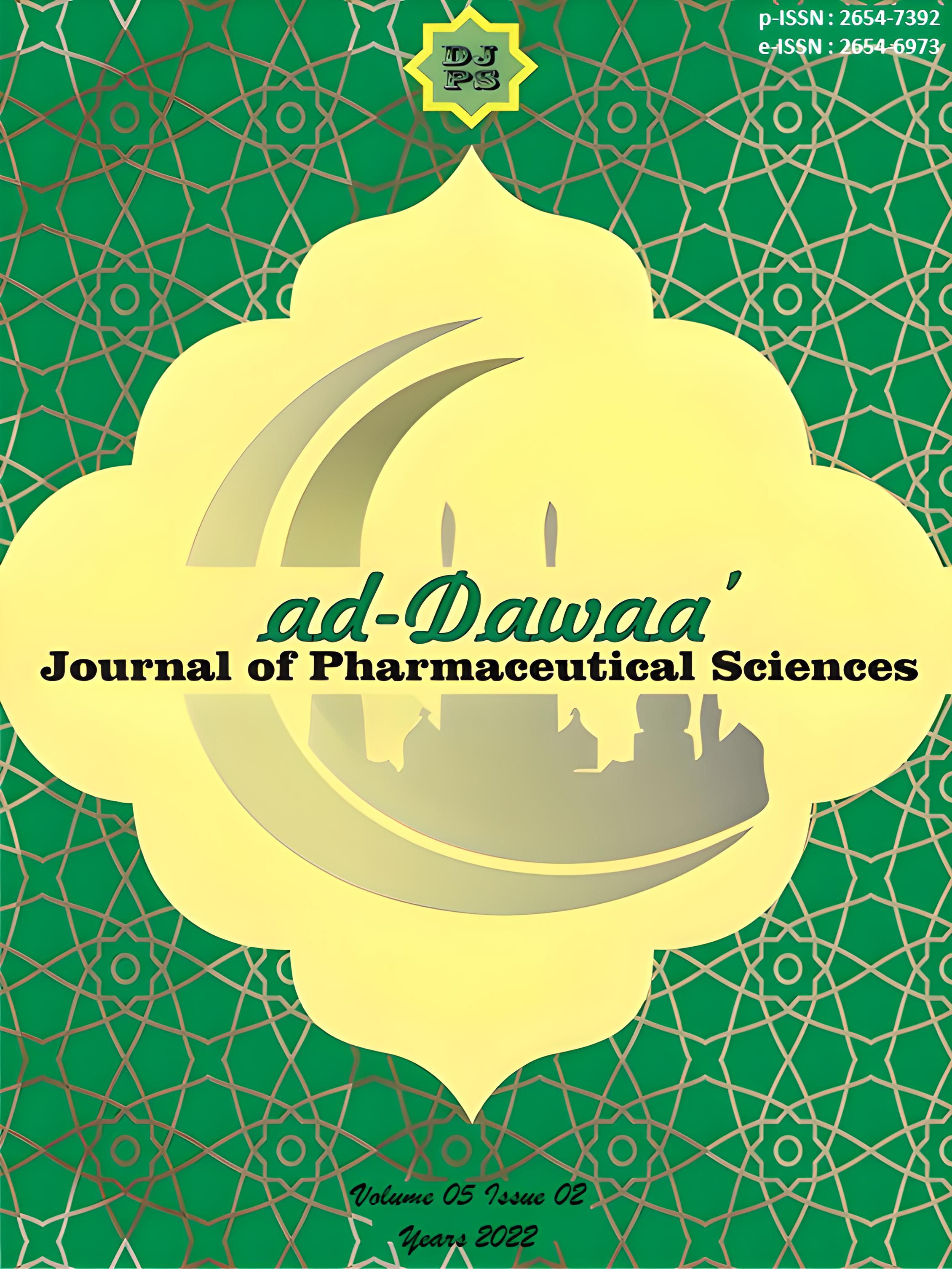Formulation and Effectivity of Henna Leaves (Lawsonia inermis L.) Extract Ointment Against Burn Healing of Rabbit (Orctolagus cuniculus)
Abstract
Burns are tissue injury resulting from contact with a source of heat. The henna leaves extract (Lawsonia inermis L.) contains tannin, which acts as an astringent to treat wounds. This research seeks to determine the efficacy and quality of henna leaves ointment (Lawsonia inermis L.). The extraction method for henna leaves (Lawsonia inermis L.) entailed maceration with a 96% ethanol solvent. The phytochemical analysis of the 96% ethanol extract of henna leaves revealed the presence of flavonoids, tannins, saponins, and terpenoids. Variable concentrations of henna leaves extract were used to formulate ointments: 2.5% (F1); 5% (F2); 10% (F3); negative control (C-); and bioplacenton® as the positive control. Organoleptic assays, homogeneity, pH, spreadability, and adhesion were used to evaluate the quality of the formulations. In rabbits with inflicted burns, administer ointments F1, F2, F3, C-, and C+ to determine the efficacy of burn treatment. The healing effect is evaluated based on the time it takes for the wound to close (maturation phase), which is characterised by the incision being covered with new tissue. The ointment made from 96% ethanol extract of henna leaves with various concentrations of F1, F2, and F3 met the test requirements for organoleptic, homogeneity, pH, spreadability, and adhesion, according to the results of the ointment quality test. The ANOVA analysis of the effect test revealed that F1, F2, and F3 had a healing effect on wounds. The lesion healing effect of Formula F3 (10%) was not significantly different from the positive control after 11 days
Downloads
Once an article was published in the journal, the author(s) are:
- granted to the journal right licensed under Creative Commons License Attribution that allows others to share the work with an acknowledgement of the work's authorship.
- permitted to publish their work online in third parties as it can lead to wider dissemination of the work.
- continue to be the copyright owner and allow the journal to publish the article with the CC BY-SA license
- receiving a DOI (Digital Object Identifier) of the work.


1.png)